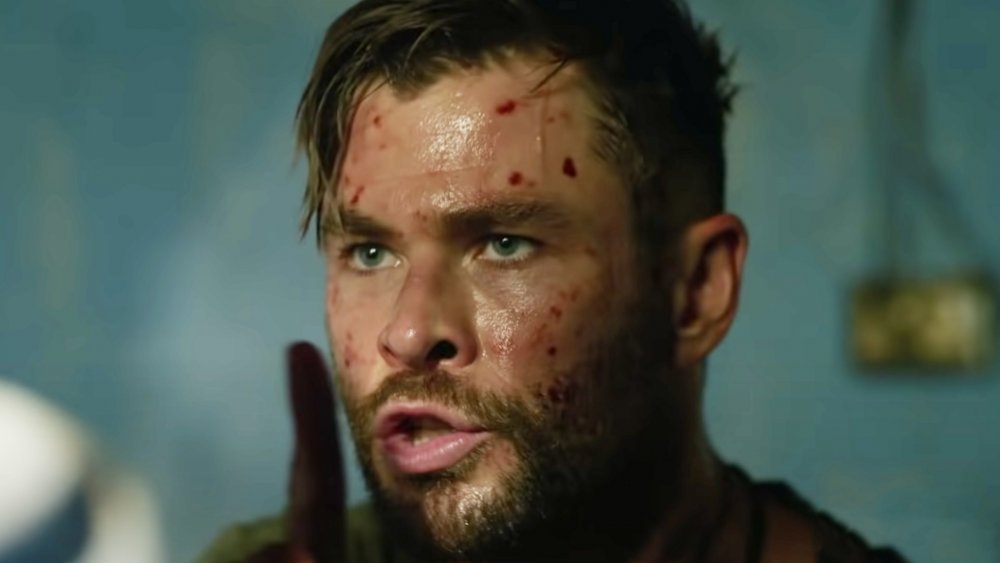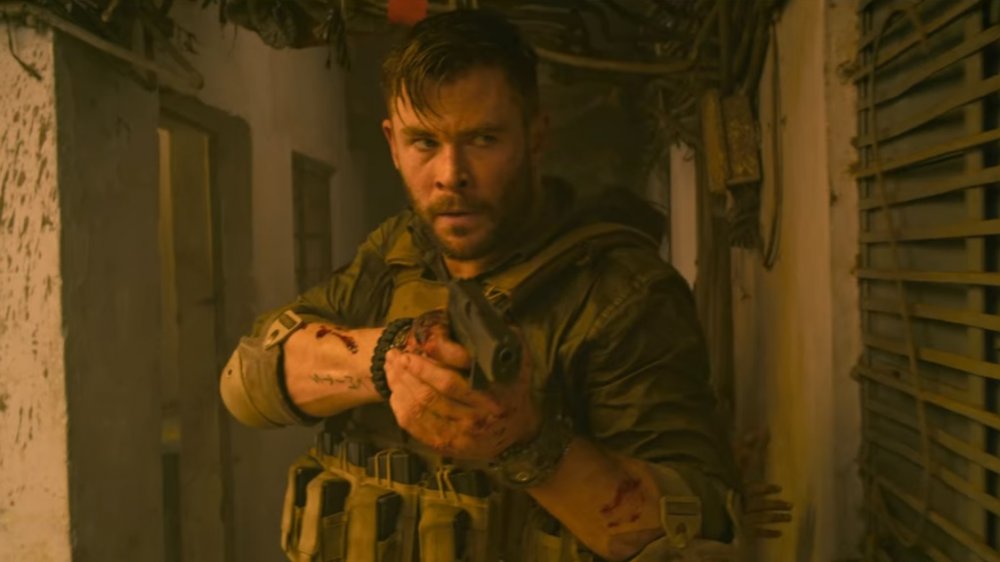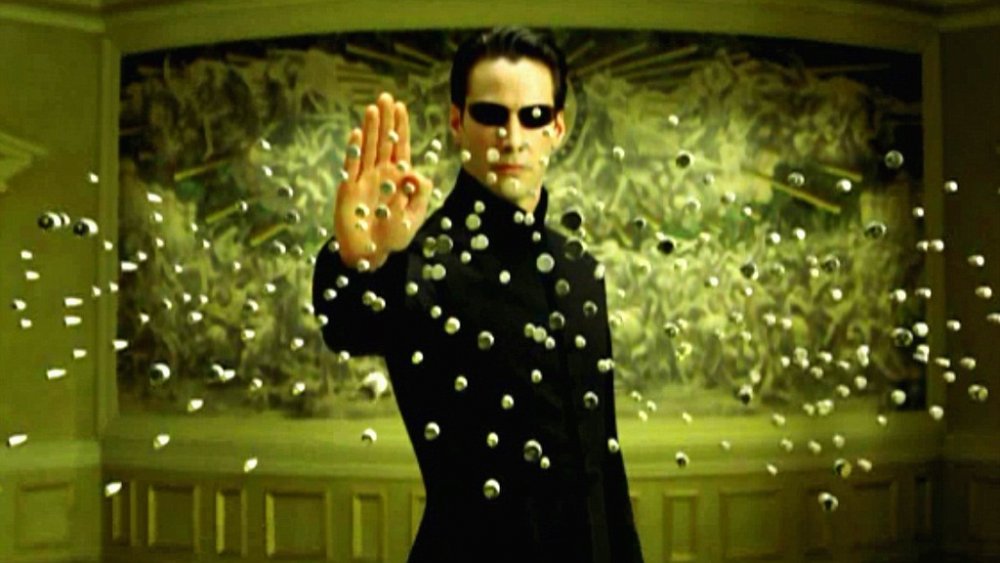The Internet Brutally Blasted Extraction Over This Big Issue
The Netflix original film Extraction is getting a lot of attention — not all of it good.
Angry, disappointed viewers have taken to Twitter in droves to point out the questionable use of a certain color scheme in the flick's Bangladesh-set scenes. Additionally, while Extraction has drawn praise for its expertly staged action sequences, it's garnered just as much criticism for its reliance on what's known as the "White Savior" trope.
A bit of background: Extraction stars Chris Hemsworth (Thor in the films of the Marvel Cinematic Universe) as Tyler Rake, a former Australian Special Air Service Regiment operator and current mercenary who's recruited to help rescue the son of India's most powerful drug lord, Ovi Mahajan Sr. (Pankaj Tripathi). A rival drug kingpin named Amir Asif (Priyanshu Painyuli) is holding the boy (Rudhraksh Jaiswal) in Bangladesh, and in a tense sequence in the film's first act, Rake runs into trouble in the form of a henchman (Randeep Hooda) of the boy's father, who's intent on performing the rescue himself. Rake escapes with the boy, but is thrust into a game of international intrigue as various interested players attempt to either secure the boy, or kill him.
Extraction was written by Joe Russo, one half of the sibling team that directed four of the MCU's most highly-regarded movies (including Avengers: Endgame, the literal biggest movie in history). His screenplay is smart, lean, and takes full advantage of Hemsworth's charisma and physicality. Unfortunately, it also does feature a version of that most troublesome of tropes in which a lone white guy must travel to a foreign land to fix a problem that apparently no native can solve. To make matters worse, Extraction uses a post-production color correction technique to make Bangladesh appear, as many have pointed out, yellow and grimy.
What are fans on Twitter saying about Extraction's yellow filter?
Nearly all of Extraction's Bangladesh-set scenes make use of what's commonly referred to as a "yellow filter." (No actual, physical filters are involved; the tint is applied in post-production.) The yellowish hue that saturates each of these scenes is a pretty sickly one, and many online have argued that the sole reason for its use in Extraction is to depict Bangladesh as a dirty place. Countless films and TV shows have tinted scenes set in countries like Mexico and India with a yellow or orange hue — so frequently so that audiences have noticed Mexico usually looks sepia-toned in American-made films.
The Twitterverse was quick to call out the Extraction filmmakers for this technique — with many users offering short, concise, bitingly sarcastic takes such as @bussdownbobbi's "Filter Type: Developing Country" and @Mrblue1's "Why does Hollywood think every foreign country is yellow?"
Other users were a bit more wordy on the subject, but no less acerbic. "I am exactly 1 minute into Extraction and the yellow filter is even stronger than I anticipated," wrote @FilmdomBlog. "Does Hollywood think the sun is made of turmeric in hot countries?"
Many of these users even agreed that, yellow filters and tired tropes aside, Extraction was actually quite enjoyable — a sentiment that failed to temper their sarcasm even a little. "Extraction was pretty good but [I don't know] why they used that yellow filter," wrote @anisanurx. "Some characters legit looked half-Simpson and that ain't right."
Why are colored filters used in movies?
Big Hollywood movies often use this technique — and if you weren't aware of it before, you may never be able to un-see it now. The trend seemed to begin in the late '90s, and in one film of that era in particular, it was extremely noticeable. In The Matrix, virtually every scene was oddly green-tinted, and scenes set within the Matrix are even greener. This became more noticeable once the flick began streaming on Netflix, as the streamer uses a 2008 Blu-ray edit that ramps up the tint (via ScreenRant).
Many other films that feature color filters seem to do so in order to fall in line with other releases from the same genre, or to evoke a certain emotion or atmosphere. Modern horror movies — beginning with 2002's The Ring, in which the effect was rather aggressive — tend to be tinted blue more often than features from other genres; this is done to achieve a cold, uncomfortable "chilling effect." Similarly, many post-apocalyptic flicks tend to wash out the color altogether for a "desaturated" look, helping to highlight the bleakness of the time and draw a line between our multi-colored world and the monochromatic could-be future.
As for that yellow filter, it's most often seen in flicks where the action takes place in the desert, in dangerous locales, or in foreign countries that many Americans perceive to be nothing but dangerous deserts. It's unfortunate to see it at play once again in Extraction, a riveting film with whip-smart writing and great performances that spends far too much of its run time looking like it's being viewed through a dirty window.


